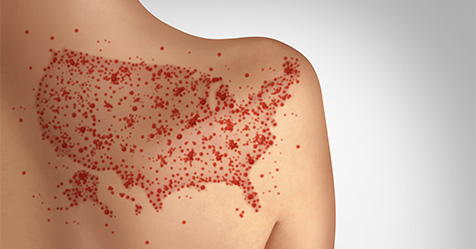U.S. Service Members Find Mold, Lead & Asbestos in Their Homes
Problems in U.S. military homes include water damage; mold; structural defects; and HVAC, plumbing, and electrical issues
Nearly 200 U.S. military families are suing a residential real estate management company due to mold, lead, and asbestos exposure. According to an ABC News report, the lawsuit alleges Balfour Beatty knowingly lied about repairs and left families in military housing that could cause serious health problems. The same company pleaded guilty to fraud in 2021 for falsifying maintenance records in order to collect performance bonuses from the government, Just Well Law reported.
The problems go back to 1996, when Congress approved the Military Housing Privatization Initiative. The goal was to improve housing faster by allowing private companies to manage and repair homes on behalf of the military. In exchange, companies were granted 50-year contracts and broad authority. However, the military became the minority stakeholder in these partnerships, which means they can’t force private landlords to make timely repairs or ensure homes meet basic health standards.
Military.com reported that Balfour Beatty has a history of fraud and mismanagement against military families and has been repeatedly sued and forced to pay millions in restitution and fines just in the last several years.
According to the complaint, which was filed this spring, “Balfour systematically failed to properly repair and remediate significant problems in the homes, including water damage, mold, structural defects, HVAC, plumbing issues, electrical problems, and the presence of lead paint and asbestos.” The lawsuit includes testimonials from numerous families who detailed unfit conditions, including caved in ceiling from water damage and homes with extremely elevated levels of toxic mold.
Recently, the National Organization of Remediators and Microbial Inspectors (NORMI™) created a Medical Advisory Board, a strategic initiative aimed at enhancing protocols used in mold assessment and remediation—especially in housing environments occupied by military personnel and their families.
The board is led by Dr. Andrew Heyman, MD, an expert in environmental medicine and mold-related illness. The initiative will directly support health-driven indoor air quality (IAQ) strategies for both on-base and privatized off-base housing, where persistent mold and water damage issues have impacted service members.


